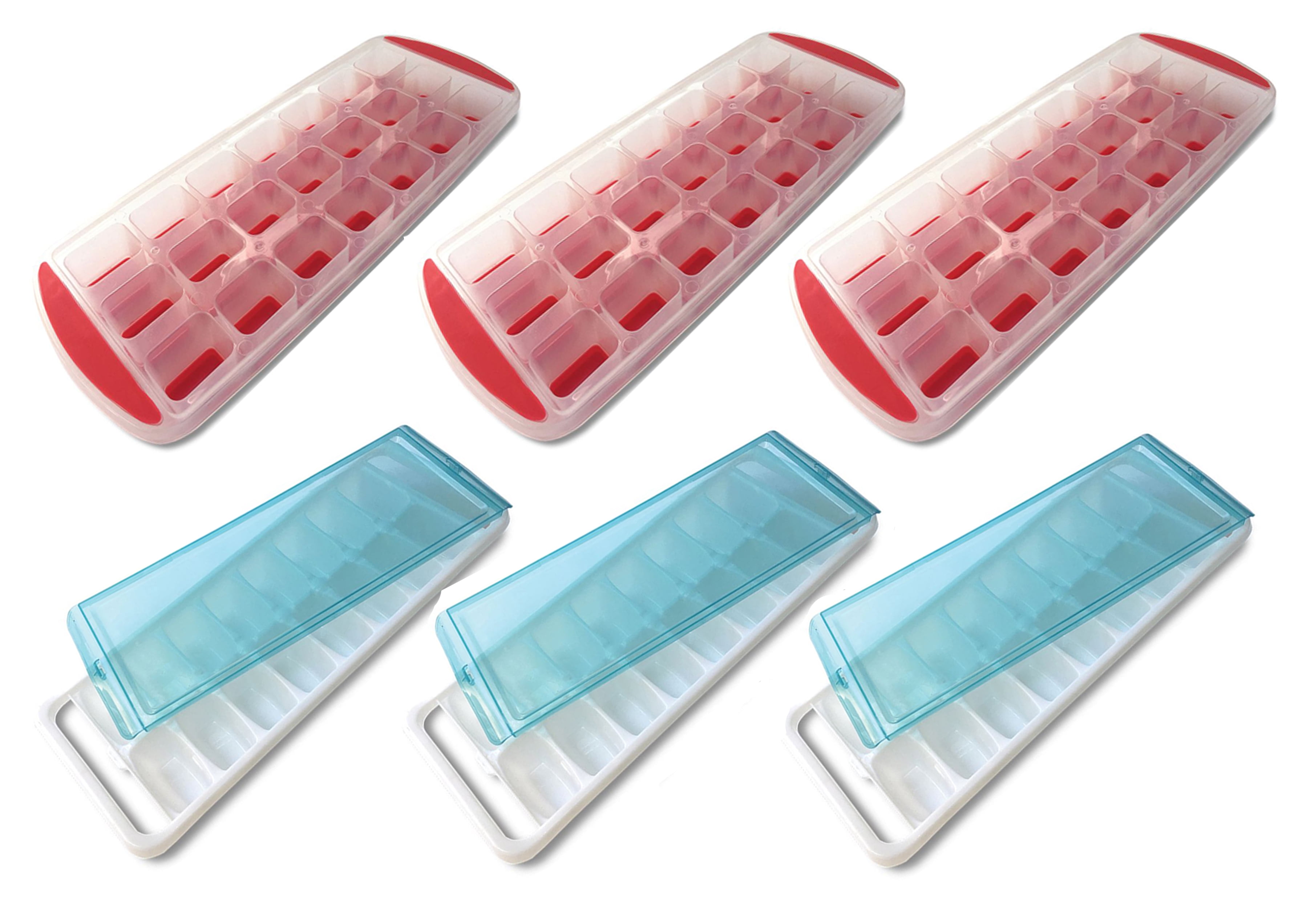Silicone kitchenware has been gaining popularity recently due to its versatility and ease of use. Among the various silicone kitchen gadgets available, silicone ice cube trays have become a common choice for many. In this article, we’ll look closer at the advantages and disadvantages of a silicone ice cube tray to help you decide whether they fit your specific needs and preferences.
Silicone is non-toxic and does not contain harmful chemicals like BPA, phthalates or PVC, which can leach into food and cause health problems. This makes it a safer material to use for food storage, especially for families with young children.

What Is A Silicone Ice Cube Tray?
A silicon ice cube tray is a kitchen tool for making ice cubes. The ice cube tray uses flexible silicone instead of rigid plastic, making it easy to pop out the ice cubes by flexing the tray. Silicone ice cube trays outshine the old plastic ones, as they resist cracking far better. You’ll discover them in fun shapes and sizes, letting you jazz up your ice cubes. Fix some juice or coffee to add a zesty kick to your drinks.
Cons Of Using Silicone Ice Cube Trays
While silicone ice cube trays are known for their durability, it’s essential to acknowledge that they are not indestructible. Over time, especially with frequent use, silicone trays may show signs of wear and tear. It could manifest as tearing or deformation of the tray’s structure. Therefore, it’s essential to be aware of the potential long-term durability concerns when considering silicone trays.
Silicone ice cube trays may lack the stability of their rigid plastic counterparts. When filling these trays with water, place them on a stable surface to prevent spills or accidents. This stability requirement is something to remember, especially if you prefer to fill your trays directly from the faucet.
It’s worth noting that silicone has temperature limitations. While silicone trays are excellent for freezing, they may not be suitable for extreme heat applications, such as baking in the oven. Using silicone trays in high-temperature environments can lead to deformation or damage. Therefore, it’s essential to adhere to the recommended temperature range for silicone ice cube trays to ensure their longevity and functionality.
Cost may also be a factor when considering silicone ice cube trays. Silicone trays are generally more expensive compared to traditional plastic ice cube trays. If you’re working within a tight budget, the higher price of silicone trays could be a relevant consideration.
Silicone ice cube trays can be susceptible to staining, mainly when used with brightly coloured or intensely flavoured liquids. This staining can be challenging to remove entirely and may affect the appearance of the trays over time. To tackle this issue, it’s a good idea to steer clear of silicone trays when working with items that could lead to stains.
Many silicone ice cube trays do not come with lids or covers. This absence of a top can lead to potential issues when stacking or storing trays in the freezer. Without a cap, odours or flavours from other foods in the freezer might mingle with the ice cubes, messing with their taste and quality. Consider covering the trays with plastic wrap or moving the ice cubes to a separate container to dodge this issue.
Why Silicon Ice Cube Trays are Terrible.
FAQ
Is silicone ice cube tray safe?
What is the best material for ice cube trays?
Is it safe to freeze in silicone?
Do silicone ice cube trays leave residue?
Are silicone Ice Cube Trays better than plastic?
However, if you find that your old plastic ice cube trays contain BPA or need more trays then silicone is more durable than plastic, and the production process is less taxing on the environment. While silicone isn’t as eco-friendly as metal when it comes to ice cube trays, it is a better option than plastic.
Are plastic ice cube trays bad?
Most of us don’t give too much thought to our old plastic ice cube trays, which may have moved around with us for decades. The problem with plastic ice trays is that they may be made with plastic that contained bisphenol (BPA). This is a chemical commonly used to make all sorts of plastic items.
Can silicone ice trays be used for baking?
This is something to keep in mind if you prefer your ice tray to have a more solid feel. Silicone ice cube trays can be used for baking, and silicone baking trays can be used to make ice cubes! One of the niftiest features of silicone material is that it can tolerate extremes in temperature.
Are silicone ice trays safe?
Silicone is sterile and does not break down as easily as plastic, making it more durable. Currently, there is no known health danger of using silicone ice trays, but since its use fairly recently, we may not know some things about silicone. Find your way to better health.
